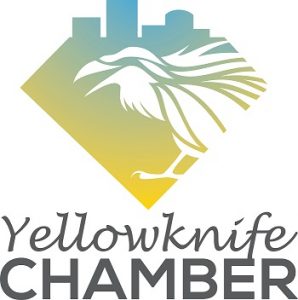YK Chamber’s Response to the City of Yellowknife 2025 Draft Budget
Dear Mayor Alty and City of Yellowknife Councillors,
On behalf of the Yellowknife Chamber of Commerce Board of Directors, we thank you for the opportunity to provide feedback on the City of Yellowknife’s Draft Budget for 2025. As advocates for the Yellowknife business community, we recognize the challenges of balancing fiscal responsibility with the delivery of essential services. However, there are several key areas in the proposed budget that we believe require further scrutiny and adjustment to support sustainable growth and financial stability.
Operational Expenditures and Taxation
We note with concern that taxation levels have increased by 15% over the last three years, from $35.8 million in 2023 to $41.2 million in 2025. General Fund expenditures are rising 12% in a single year, from $52.3 million to $58.4 million. These increases far exceed inflation and place an undue burden on taxpayers. We urge Council to explore all options to rein in operational expenditures and align budget increases more closely with inflationary trends.
Staffing Growth
The addition of 20 staff positions in 2025 represents a 15% growth in staffing over two years, significantly outpacing Yellowknife’s population growth. We recommend that Council closely scrutinize these new positions to ensure they are essential and provide measurable value to the community.
Community Services Department Deficit
The Community Services Department’s operating deficit has grown from $6.3 million in 2015 to $12.8 million in 2025, a 103% increase. In comparison, revenues collected in the form of user fees for parks and recreational facilities have only increased by 25% during this period. This trajectory is unsustainable. Historically, the City adhered to a cost-recovery philosophy for user fees in this department. If this approach has changed, we urge Council to define clear limits on the new subsidization philosophy to ensure fiscal responsibility.
Municipal Enforcement Division Revenues
The Municipal Enforcement Division’s revenues have declined from $1.4 million in 2016 to $1.1 million in 2023, despite maintaining the same staffing levels. Before adding two new positions, we recommend investigating the factors behind this decline. For instance, has the new parking app reduced parking meter revenue compared to the manual method? Addressing these questions is crucial before further investments are made.
Land Sales and Development
Projected land sales of $1 million in 2025 are a significant drop from $6 million in 2018. To address this decline, we strongly encourage the acceleration of development in the Con Redevelopment Area and Niven Phase 8. Land availability and sales are vital for community growth and economic activity.
Mobile Equipment Replacement Reserve
The Mobile Equipment Replacement Reserve is accumulating a substantial balance, projected to grow from $6.6 million in 2025 to $9.4 million by 2027. With fleet expenditures forecasted to remain relatively low, we recommend transferring excess funds to the Capital Fund to better address immediate infrastructure needs.
Downtown Development Reserve
We are concerned that the Downtown Development Reserve is being depleted without meaningful progress toward revitalization. While downtown revitalization may not be among Council’s strategic directives, it remains a priority for the Yellowknife Chamber of Commerce. We commend Council for finding alternative funding for the Housing Accelerator Fund incentives and urge similar scrutiny of the Downtown Cleanup Program. We also extend an invitation to meet with Council in the coming year to discuss collaborative efforts toward revitalizing our downtown core.
Capital Projects
We appreciate the thorough project substantiations in this year’s budget, which prioritize “needs” over “wants.” However, two projects warrant further consideration:
- Dog Pound: This service could be effectively provided by the business community if fair compensation is ensured. We encourage the City to work with private-sector partners to strengthen this model and reduce operational costs.
- Fritz Thiel Field Upgrades: Given the Community Services Department’s growing deficit, these upgrades should be deferred. The Con Redevelopment Area may offer opportunities for future sports surface development, making this investment premature.
We value the work that Council and City Administration have put into developing the Draft Budget for 2025. As you finalize this plan, we respectfully ask that you address these concerns to ensure fiscal responsibility, sustainability, and continued support for our community and local businesses.
We appreciate your consideration of this feedback and welcome the opportunity to discuss these recommendations further.

